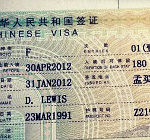Exactly a year after the Depsang incursion, India-China ties are facing a fresh crisis – this time over Arunachal Pradesh.
Media reports state that last month China had requested India not to include any youth from Arunachal Pradesh in the delegation scheduled to travel to China as part of the bilateral youth exchange programme.
India’s Ministry of Youth Affairs and Sports – the nodal ministry for the programme – wrote twice to the Ministry of External Affairs (on March 12 and April 3) for necessary directions. The MEA cancelled the trip to avoid any potential embarrassment.
The Chinese request may have stemmed from Beijing’s attempt to avoid awkward situations, whereby it has to reject the visas of Arunachali delegates, or issue stapled visas that are not acceptable to India. Incidentally, in 2012, India had dropped an Arunachali Air Force official from a military delegation following Chinese objections.
The current incident thus also touches upon a related issue in the bilateral relationship – that of stapled visas issued to residents of Arunachal Pradesh.
China claims the state as south Tibet and part of Chinese territory. Hence, it has taken the position that Arunachalis do not need a visa to travel to China. Accordingly, Beijing has in the past refused to issue visas to residents of the state.
India has steadfastly rejected the Chinese assertion. However, as the new book Cold Peace: China–India Rivalry in the Twenty-first Century points out, way back in 1981, India and China had moved away from their stated positions, and China had agreed to issue stapled visas to the Arunachalis. [1] This arrangement worked well, as both sides began deepening people-to-people exchanges since the early 1990s.
It was only in 2008 that this arrangement ran aground when China began issuing similar stapled visas to the residents of Jammu and Kashmir (J&K), citing the region’s ‘disputed status.’
India retaliated by issuing a travel advisory that invalidated the stapled visas, disregarding the earlier arrangement. [2] Matters escalated in 2010 when China denied a visa to the then chief of Indian Army’s Northern Command, Lt. Gen. B.S. Jaswal, who was scheduled to lead a military delegation to Beijing. India responded by suspending bilateral military-to-military interaction.
It was during the 2011 BRICS Summit in Sanya that both sides resolved the problem, and China resumed issuing regular visas to Army officials and residents of J&K.
However, China did not change its policy regarding visas to Arunachalis and in some cases, it even denied visas. On its part, India too continued its travel advisory on stapled visas. Consequently, since 2011, there have been at least three instances where residents from the state, mostly athletes, have been unable to travel to China.
The current incident comes at a particularly bad time, when both countries are observing 2014 as the `Year of Friendly Exchanges’, and intensifying their high-level exchanges. [3]
Yet, bridging the trust deficit remains a major challenge for both sides. Incidents such as these reinforce adverse perceptions of China among Indians, and affect the momentum of the bilateral relationship.
The resolution of this issue hinges on the progress in the boundary dispute negotiations. Therefore, moving beyond the tit-for-tat measures, India needs to keep conveying its concerns in all bilateral interactions, and work with the Chinese to evolve a clearly spelt out policy.
Sameer Patil is Associate Fellow, National Security, Ethnic Conflict and Terrorism, at Gateway House.
This article was exclusively written for Gateway House: Indian Council on Global Relations. You can read more exclusive content here.
For interview requests with the author, or for permission to republish, please contact outreach@gatewayhouse.in.
© Copyright 2014 Gateway House: Indian Council on Global Relations. All rights reserved. Any unauthorized copying or reproduction is strictly prohibited
References:
[1] Smith, J. (2014). Cold Peace: China–India Rivalry in the Twenty-first Century. (pp. 43-45). Lanham: Lexington Books.
[2] Ministry of External Affairs, (2011).Q.1597 Stapled visa for people from Jammu and Kashmir. Retrieved from website: http://www.mea.gov.in/bilateral-documents.htm?dtl/14381/Q1597+Stapled+visa+for+people+from+Jammu+and+Kashmir
[3] Ministry of External Affairs, (2014). Address by Vice President Shri Hamid Ansari at the launch of the India-China Year of Friendly Exchanges in New Delhi. Retrieved from website: http://mea.gov.in/Speeches-Statements.htm?dtl/22862


